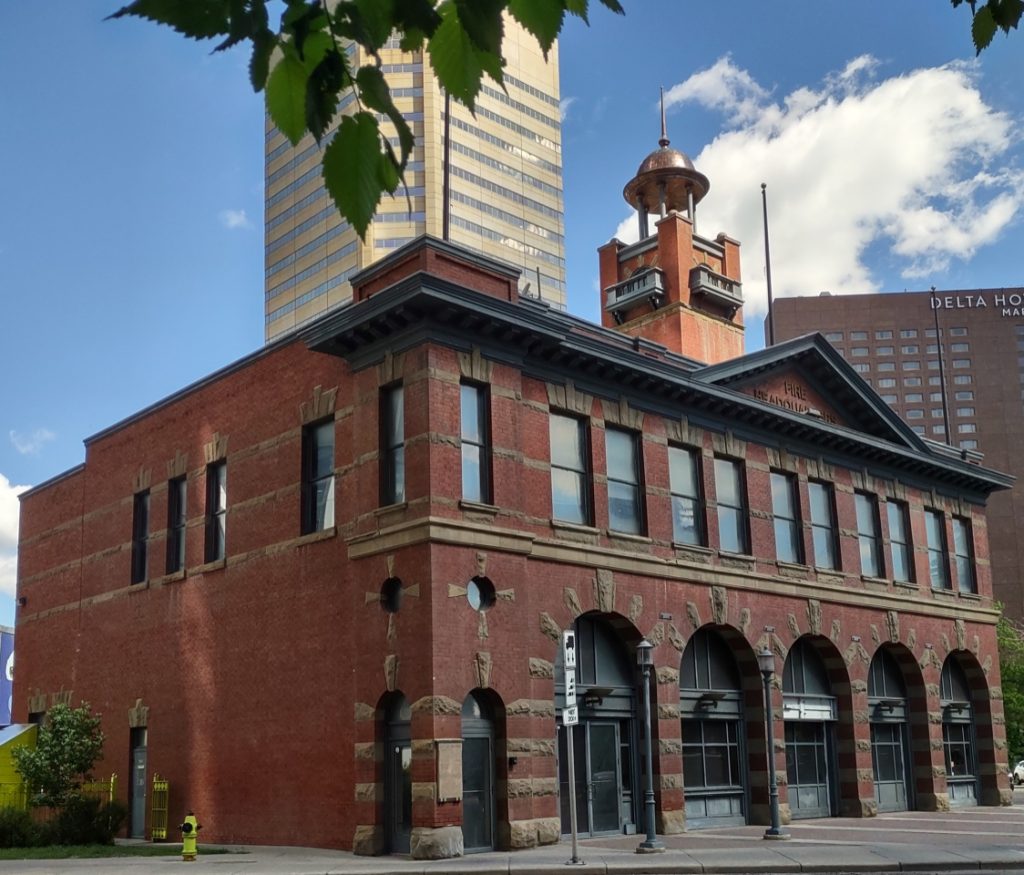
In addition to its unusual orientation, beautiful architecture, and unique interiors, Calgary’s Fire Headquarters building intrigued me for yet another reason: its sandstone. Was it possible that this stone, like that of so many other Calgary buildings, had come from Glenbow Quarry? Over the past 15 years, I had not been able to locate a published source, nor anyone associated with the fire department or the city, that could provide the answer. But there was somewhere else I could look.
While writing my book about Glenbow Ranch Provincial Park, I had found documents in the City of Calgary Archives proving that Calgary’s City Hall had used stone from Glenbow Quarry. Perhaps these archives also contained documents regarding the source of the firehall’s stone.
Following the archivists’ emailed instructions, I chose items to view and then travelled to Calgary to look through the boxes of materials they had set aside for me. Hours flew by, as I leafed through file after file of letters, memos and records looking for details to use in my presentation.
Although the ink had dried on these papers more than a hundred years ago, the colourful stories recorded were as vivid as ever. I could hear the laughter in the ink’s curling swirls on the note which accompanied a mischievous monkey sent to fire chief Cappy Smart; and Cappy’s reply, with its dashes disguising blasphemous words, made me chuckle. In contrast, the thick and unevenly inked block letters in the Membership Roll which recorded the death of his brother, betray Cappy’s grief. Yet more stories amongst the stacks of papers clamoured for attention, but my time was limited and I still needed information about the building’s sandstone.
Then, in a box of correspondence, I found it! A letter that mentioned Glenbow stone! I exclaimed aloud, jumped up, and rushed over to the archivist, to ask for permission to use an image of the document in my presentation. While he was typing up my request, I returned to my table and looked at the next page in the pile. What!? I scanned it — and the following documents — muttering “Oh My!” “No way!” and other such shocked utterances.
It was a bonanza! Not one, but five documents told a Glenbow tale. It seems the stonecutters in Calgary in 1911 were concerned that non-union workers were cutting stone for the new firehall, which would have been in violation of the building contract. The City asked the architect to verify that the contractor was using union labour.
Consequently, the contractor forwarded a copy of the order they had made to the Western Supply Company, which was the agent for Quinlan-Carter, Ltd., the firm that ran Glenbow Quarry. The contractor stated that all the stone had come from this source, and the order for $2200 of Glenbow stone was verified with the signature of the man who ran the Western Supply Company, who was also the son of Mr. Carter of Quinlan-Carter.
Not only had all the sandstone in the Fire Headquarters building definitely come from Glenbow Quarry, but now I knew its cost, and the background story that put the building’s construction in the context of its time period. My visit to the City of Calgary Archives had been more successful than I had dared to hope.
While researching the history of Calgary’s Fire Headquarters I had found many intriguing stories, but the biggest surprise was that the source of the sandstone that was plainly visible on the building’s exterior was hidden in the depths of the City of Calgary Archives.